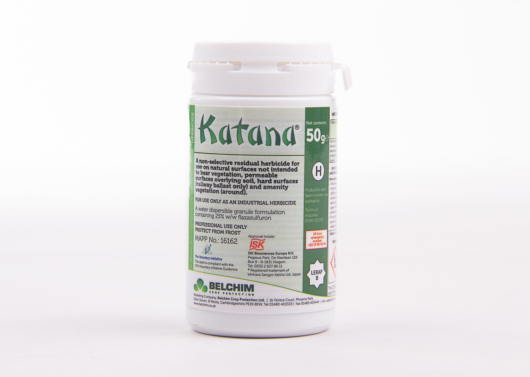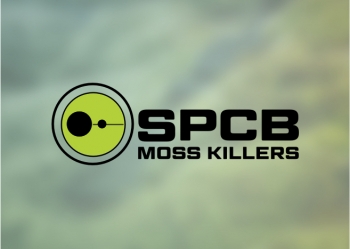Chikara/Katana Herbicide Weed Killer - 50g
A powerful, non-selective herbicide for natural surfaces preventing re-growth for up to 9 months with just one application.
Read More

Katana weed killer prevents weed growth on all types of natural permeable surface, including gravel, for up to 9 months.
Katana (originally named Chikara) is a powerful, non-selective, residual, broad spectrum herbicide for killing annual and perennial weeds and prevent re-growth for up to 9 months with just one application. Very effective for the long lasting control of weeds on gravel surfaces such as driveways, paths and railway ballasts. To kill and control growth on areas with established weeds you should mix Katana with one of our weedkillers, Clinic UP or Roundup, at the appropriate rate.
This 50 gram pack will give a coverage of approximately 3500m2 at the rate of 15g per 15 ltrs of water.
After use of any weedkiller, we recommend that you clean your application equipment thoroughly using our specialist cleaner, All Clear, particularly if the sprayer will be used on vegetation. Water used for rinsing after Katana should be sprayed onto the same area or waste land, rather than in drains.
When applying with a sprayer (either knapsack or compression) then the application rates are as follows:
- Application rate: 15g
- Water rate: 15 litres
- Coverage 1,000 square metres
- Add 15g +/- glyphosate 360 in a half-filled knapsack and top up to 15 litres
- MAPP: 16162
- Contains: Flazasulfuron
- Formulation: Water Dispersable Granule
- Application Rate: 150 g/ha
- Water Rate: 200 - 600 L/h
Will Katana really stop weeds for a long time?
Yes. Providing that you follow the application instructions and dosage rates then the area to which you apply the Katana will remain free of re-growth for a long period of time. This is vary slightly depending upon the surface or the weather however you will be looking at around 9-months before growth will start.
How do I apply this weed killer?
Katana is a small granular product which should be mixed with water and then the application method really depends upon the size of the area you are treating. For smaller areas a watering can is a good, easy method and for larger areas a sprayer would save a lot of effort and make your application more precise.

